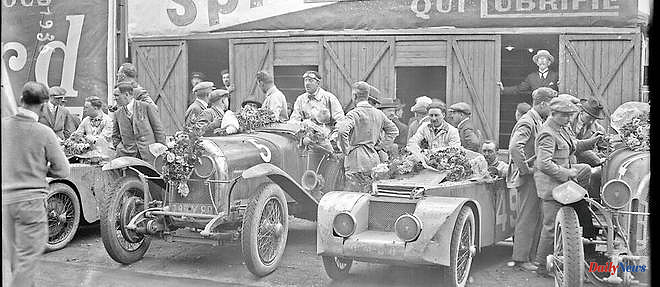It's the post-war period, the beginnings of the Roaring Twenties, the taste for creating, sharing, living at full speed, reinventing oneself. The abundant era was conducive to experimentation and the automobile was no exception. Since its beginnings, at the dawn of the century, we challenge ourselves, we go to the big neighboring city to find out who will cross the finish line first. Every fledgling brand wants to prove they're the best.
Already, the most ambitious sharpen their weapons, lighten, inflate the mechanics and throw themselves on the open roads without more precautions, linking Paris to Rouen, Bordeaux or Madrid. This last race precisely was interrupted in Bordeaux, because three million people massed at the edges of the track where Louis Renault completed the first stage at an average of 105 km/h. He will learn, on his arrival, the fatal accident of his brother Marcel, also in the race.
The success of the event would grow until a disagreement with the ACF pushed the ACO to create its own event. Rather than reasoning in pure speed, the idea was to test the cars closest to the series over 24 hours in order to demonstrate their qualities of endurance and reliability. An extraordinary test bed and a springboard for the brands and the 33 crews who lined up on May 26, 1923 at the start of the first edition. The regulations were original, set up by journalist Charles Farroux, Georges Durand, general secretary of the ACO, and Émile Coquelle, an industrialist at the head of the Rudge-Witworth establishments.
Classified according to four categories of displacement (less than 1.5 liters, between 1.5 and 2 liters, from 2 to 3 liters, and more than 3 liters), each vehicle had to have its bodywork, its headlights, its seats in the number of four, except for carts under 1.1 liters. The driver is alone on board, not assisted by a mechanic as in online races, but supported by a teammate to whom he passes the baton. However, it is equipped with tools to deal with any failure. Unusual, the unoccupied seats had to be ballasted each with 60 kg to best reproduce the civilian use of the vehicle, which was 180 kg of lead.
To gain speed, the pilots lower the hood, which begins their physical resistance, then confronted with the night and the pitiful range of the headlights. Preceded by a vague halo, the cars follow each other all night long, the Chenard
On a bicycle lent by a policeman, he will perform the operation, sealing the hole with a cork. The great story of Bentley at the 24 Hours of Le Mans was beginning to be written, but it was the Chenard and Walker who completed the 24 hours after 2,205 kilometers covered at an average of 92 km/h. However, she was not victorious, as the Rudge-Witworth Cup required three consecutive appearances to determine a winner. An idea quickly abandoned so that the competition remains understandable to the general public, but always favoring endurance, until today.












